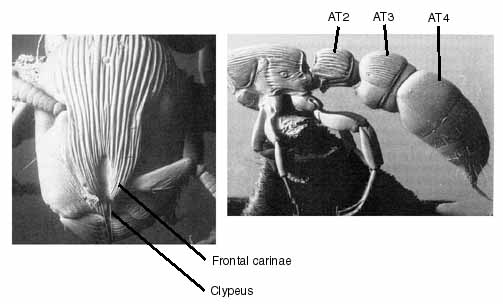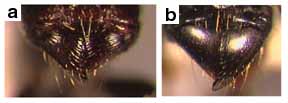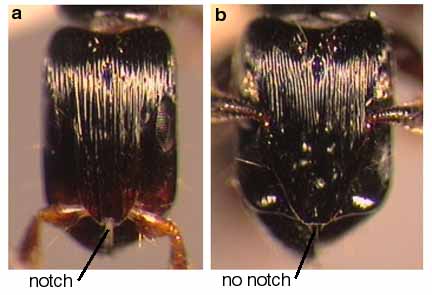
| Genus List | Species List |

10a. AT4 smooth or with scattered puncta, not striate: 50
10b. AT4 distinctly longitudinally striate: 200

50a. Mandibles coarsely striate: whymperi
50b. Mandibles smooth and shining: 100

100a.100a. In full-face view, frontal carinae extend beyond anterior margin of clypeus; posterior portion of clypeus deeply recessed and forming a notch between anteriorly projecting frontal carinae; AT2 coarsely striate, AT3 very feebly striate; pair of pygydial teeth flanking sting stout and much larger than adjacent teeth: godmani
100b. Frontal carinae do not extend past anterior margin of clypeus, prominence formed by anterior borders of frontal carinae smoothly rounded, not notched medially; AT2 and AT3 similarly finely striate; pygidial teeth gradually enlarging toward sting, teeth flanking sting slightly larger than preceding teeth: escobari

200a. Head relatively long and thin, eyes situated at midlength on sides of head; prominence formed by anterior borders of frontal carinae medially notched; metatarsus (basalmost tarsal segment) of middle leg with 3 peg-like setae on outer distal margin: meinerti
200b. Head relatively shorter, eyes situated more posteriorly on sides of head; prominence formed by anterior borders of frontal carinae smoothly rounded, not notched medially; middle basitarsus with 4-5 peg-like setae on outer distal margin: brevitarsus

Literature Cited
Andrade, M. L. de 1998. Fossil and extant species of Cylindromyrmex (Hymenoptera: Formicidae). Revue Suisse de Zoologie 105:581-664.
Page author:
John T. Longino, The Evergreen State College, Olympia WA 98505 USA.longinoj@evergreen.edu